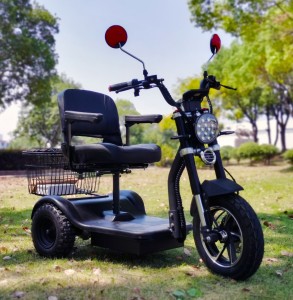Two-wheeled electric scooters have become a popular mode of transportation in urban areas, providing a convenient and environmentally friendly way to get around. These compact and agile vehicles are popular with commuters, students and city dwellers who are looking for a convenient and efficient way to navigate busy streets. But who invented the two-wheeled electric scooter, and how did it become such a popular mode of transportation?
The concept of two-wheeled electric scooters dates back to the early 2000s, when electric vehicles began to gain traction as a viable alternative to traditional gasoline-powered cars. However, the specific inventor of the two-wheeled electric scooter is not widely known as the design and development of electric scooters has evolved over time through the contributions of various innovators and engineers.
The Segway PT is one of the earliest versions of a two-wheeled electric scooter, invented by Dean Kamen and introduced to the market in 2001. Although the Segway PT is not a traditional scooter, it has a self-balancing design and electric propulsion, laying the foundation for the development of electric scooters. Although the Segway PT was not a commercial success, it played an important role in popularizing the concept of electric personal transportation.
Over the next few years, numerous companies and individuals contributed to the development of the two-wheeled electric scooter, perfecting its design, performance and functionality. Innovations in battery technology, electric motors and lightweight materials have played a crucial role in making e-scooters more practical and attractive to a wide range of users.
The rise of e-scooter sharing services in cities around the world has also contributed to the widespread adoption of two-wheeled e-scooters. Companies such as Bird, Lime and Spin have launched fleets of electric scooters that can be rented through smartphone apps, providing convenient and affordable transportation options for short trips in urban areas.
The popularity of two-wheeled electric scooters can be attributed to several factors. Their compact size and maneuverability make them ideal for navigating congested city streets and sidewalks, providing a practical solution to urban transportation challenges. Additionally, the eco-friendly nature of e-scooters, with zero emissions and minimal impact on the environment, is in line with the growing emphasis on sustainable transportation options.
Advances in e-scooter technology in recent years have led to the development of high-performance models that can reach higher speeds and cover longer distances on a single charge. Features such as regenerative braking, integrated lighting and smartphone connectivity further enhance the appeal of e-scooters, making them a versatile and convenient mode of transportation for a wide range of users.
While the specific inventor of the two-wheeled electric scooter may not be widely recognized, the collective efforts of innovators, engineers, and companies have fueled the development and popularity of this modern form of personal transportation. As electric vehicles continue to gain momentum, the future of two-wheeled electric scooters looks promising, with continued advancements in technology and design shaping the next generation of electric scooters.
In summary, two-wheeled electric scooters have become a popular and practical mode of transportation, providing a convenient and environmentally friendly alternative to urban travel. While the specific inventor of the e-scooter may not be widely known, the collective contributions of innovators and companies have fueled its development and widespread adoption. With continued advancements in technology and design, the future of two-wheeled electric scooters looks promising as they will continue to play an important role in shaping the future of urban transportation.
Post time: Apr-03-2024



